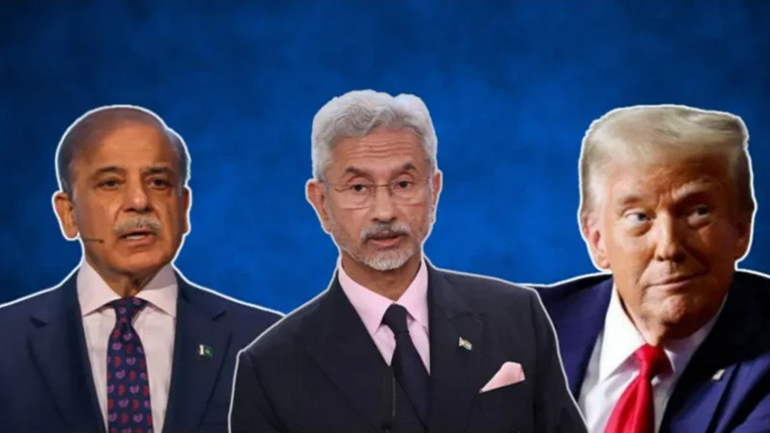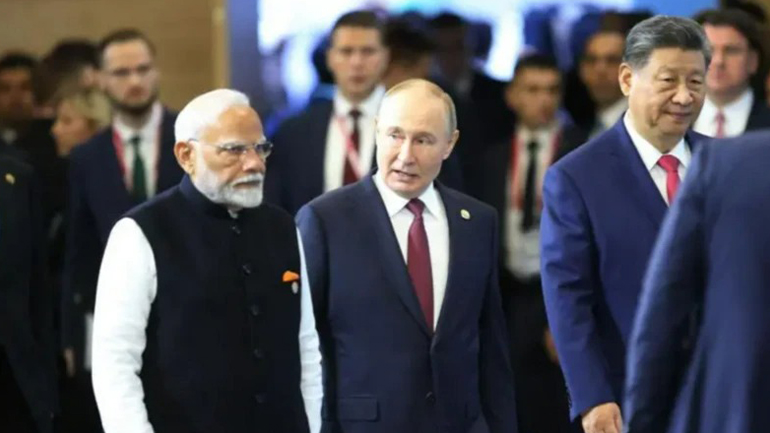

India’s External Affairs Minister S. Jaishankar visited China last week, where he met with top officials, including Chinese President Xi Jinping, in an effort to improve India-China relations. Jaishankar’s visit came at a time when both countries are attempting to rebuild ties following years of tension. This marked the first Jaishankar China visit since the deadly 2020 Galwan Valley clash. At a time when there is intense debate in India over China’s support for Islamabad during a four-day India-Pakistan conflict, the visit raises important strategic questions. During the confrontation, China not only openly backed Pakistan but was also reported to have supplied weapons, strengthening the China-Pakistan alliance. Given this backdrop, is Jaishankar’s outreach to Beijing strategically sound? Is India attempting to recalibrate its India-US-China balance by moving closer to China? And does Beijing now wield greater South Asia influence than New Delhi, particularly among developing nations?
Last October, Indian Prime Minister Narendra Modi and Chinese President Xi Jinping met during the BRICS summit 2024 in Russia. It was the first bilateral meeting between Modi and Xi since tensions escalated in 2020, and it helped restart diplomatic talks. In June, India’s National Security Advisor Ajit Doval and Defence Minister Rajnath Singh traveled to Beijing to attend the Shanghai Cooperation Organization (SCO) meeting, signaling another effort toward dialogue. Now, following Jaishankar’s China visit, some observers are calling this a restoration of India-China diplomacy, while others view it as a merely symbolic visit. Shruti Pandal, an expert in international affairs, believes Jaishankar’s trip should be seen as an attempt to improve India-China bilateral relations. It is worth noting that India and China share a border over 3,000 kilometers long, which has often been the site of border disputes and skirmishes. In April, U.S. President Donald Trump imposed trade tariffs on both India and China. While China reacted strongly, India chose the path of negotiation. So, what are India’s true priorities in this complex geopolitical landscape? According to Professor Pushp Adhikari, a scholar of international politics, “The real issue is the border, but that has now been set aside. The reason behind this shift is Donald Trump. His policies are pushing both countries closer together.” He adds, “It remains to be seen how far this relationship goes. If the U.S. asks India to pursue a bilateral trade agreement and distances itself from Russia, China, and other BRICS nations, India may be more inclined to comply. But if it does, I don’t think India-China trade relations will progress very far.”

When the conflict between Pakistan and India was at its peak, US President Donald Trump announced a ceasefire on social media.
Jaishankar’s visit has sparked debate within India’s domestic politics. The opposition party, Congress, questioned the need to visit China, a country that “supports Pakistan.” Dr. Rajeev Ranjan, Associate Professor at the Department of East Asian Studies, University, stated, “Had the Foreign Minister not gone to China, it could have harmed India’s strategic interests.” According to him, “The Foreign Minister raised his voice against terrorism at the SCO platform. Had he not gone, such concerns would not have been voiced. And if India had refused to participate, it might have jeopardized the upcoming SCO summit scheduled to be held in India, possibly prompting the Chinese leadership to decline attending.” At the height of the India-Pakistan conflict, U.S. President Donald Trump declared a ceasefire via social media. Pakistan publicly thanked Trump, while India has so far not acknowledged his role in the ceasefire. Nonetheless, Trump has repeatedly emphasized his key role in de-escalating the situation.
Shruti Pandal pointed out that “India has consistently told the U.S. that the India-Pakistan conflict is a bilateral issue. Similarly, India wants to manage its ties with China bilaterally. At the SCO, the Foreign Minister made it clear that no third party can influence bilateral relations. Trump’s foreign policies have created a delicate balance between Chinese and American interests in the region.” Professor Pushp Adhikari noted, “Reports from Russia suggest a desire to reactivate the Russia-China-India trilateral alliance. India will now have to respond, especially as New Delhi has been aligning more closely with the United States. This creates a strategic dilemma for India in choosing its long-term partners.”

Prime Minister Narendra Modi and President Xi Jinping met in Russia in October last year.
Although efforts are being made to improve India-China diplomatic relations, the reality is that many fundamental and long-standing challenges between the two nations persist. In recent years—particularly after the Galwan Valley clash—tensions have increased and have yet to be fully resolved. China’s growing closeness with Pakistan and projects like the Belt and Road Initiative (BRI) continue to heighten India’s security concerns. At the same time, India’s growing cooperation with the United States and the Quad alliance is a factor that makes China uneasy. There is also a significant trade imbalance between India and China. India imports far more goods from China than it exports. On this economic disparity, Shruti Pandal says, “The Foreign Minister has raised these issues, stating that while China wants dialogue, it must also listen to our concerns. The reality is, nothing is easy with China. India has been in talks with China for years. However, one can say that the current trend in global geopolitics favors India.” China already objects to the presence of the Dalai Lama in India and disputes related to Tibet. Additionally, India is quite concerned about China’s activities on the Brahmaputra River. So, what should India focus on while trying to improve bilateral ties? In response, Professor Pushp Adhikari explains that “To move forward with China-India relations, India will need to clarify its foreign policy on several issues.” India and China are two distinct civilizations, but both have progressed together. If they strengthen their ties further, they could collectively reduce U.S. pressure. The most important factor is effective regional cooperation to prevent misunderstandings.” Professor Rajeev Ranjan emphasizes that India and China must prioritize stability and consistency in their relations. According to him, “First, there must be stability in bilateral ties. Second, the long-standing border disputes need resolution. Third, attention must be paid to the roles of the U.S. and Pakistan. If India and China focus on these three areas, their relationship can move in a positive direction.”
Powered by Froala Editor